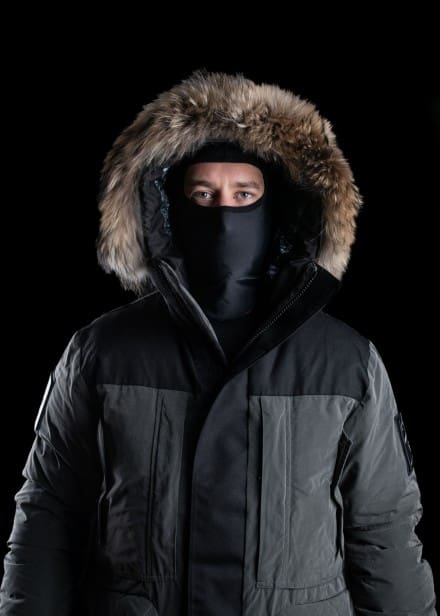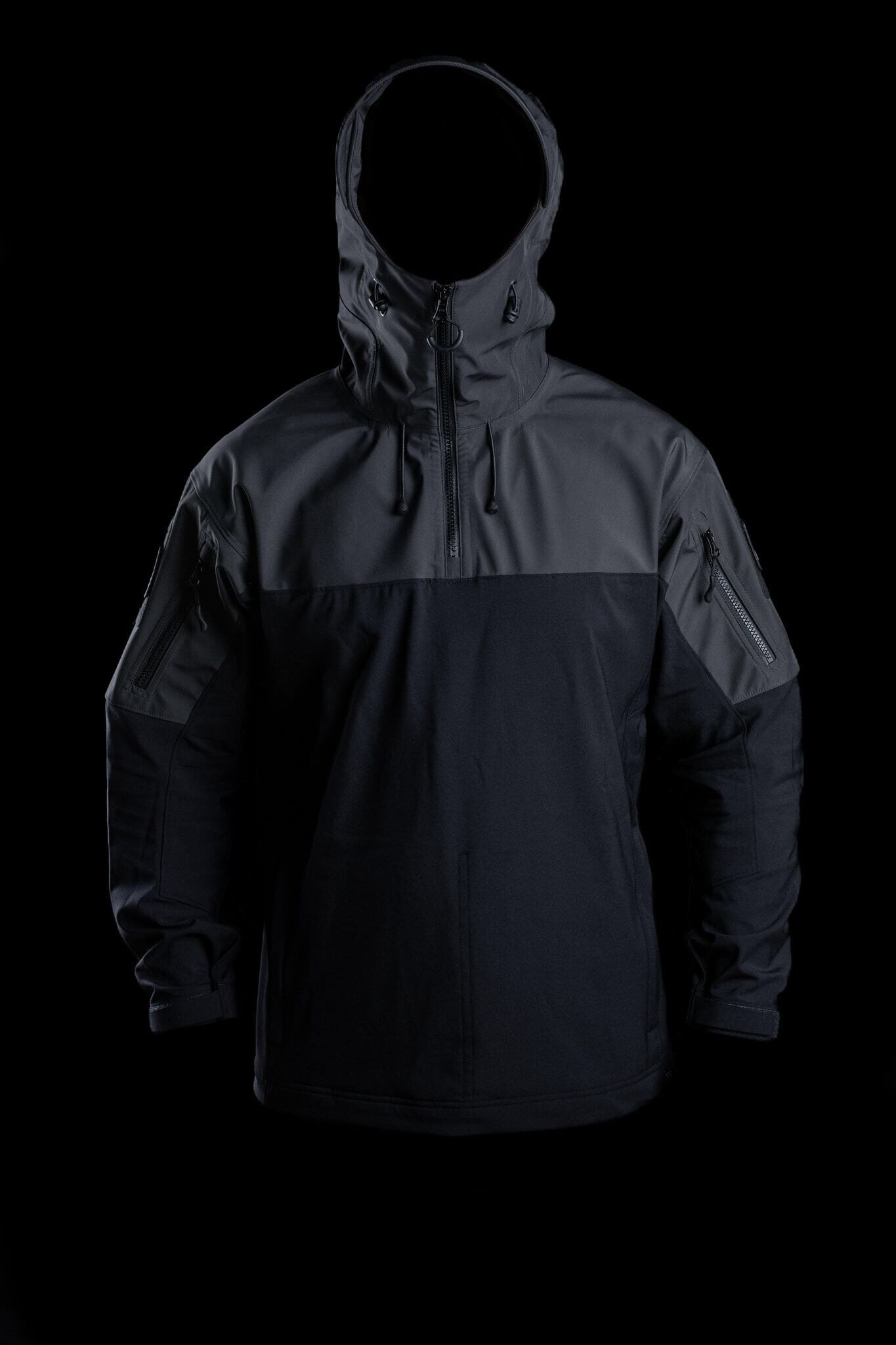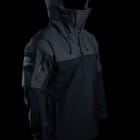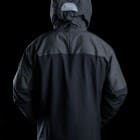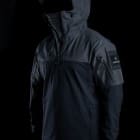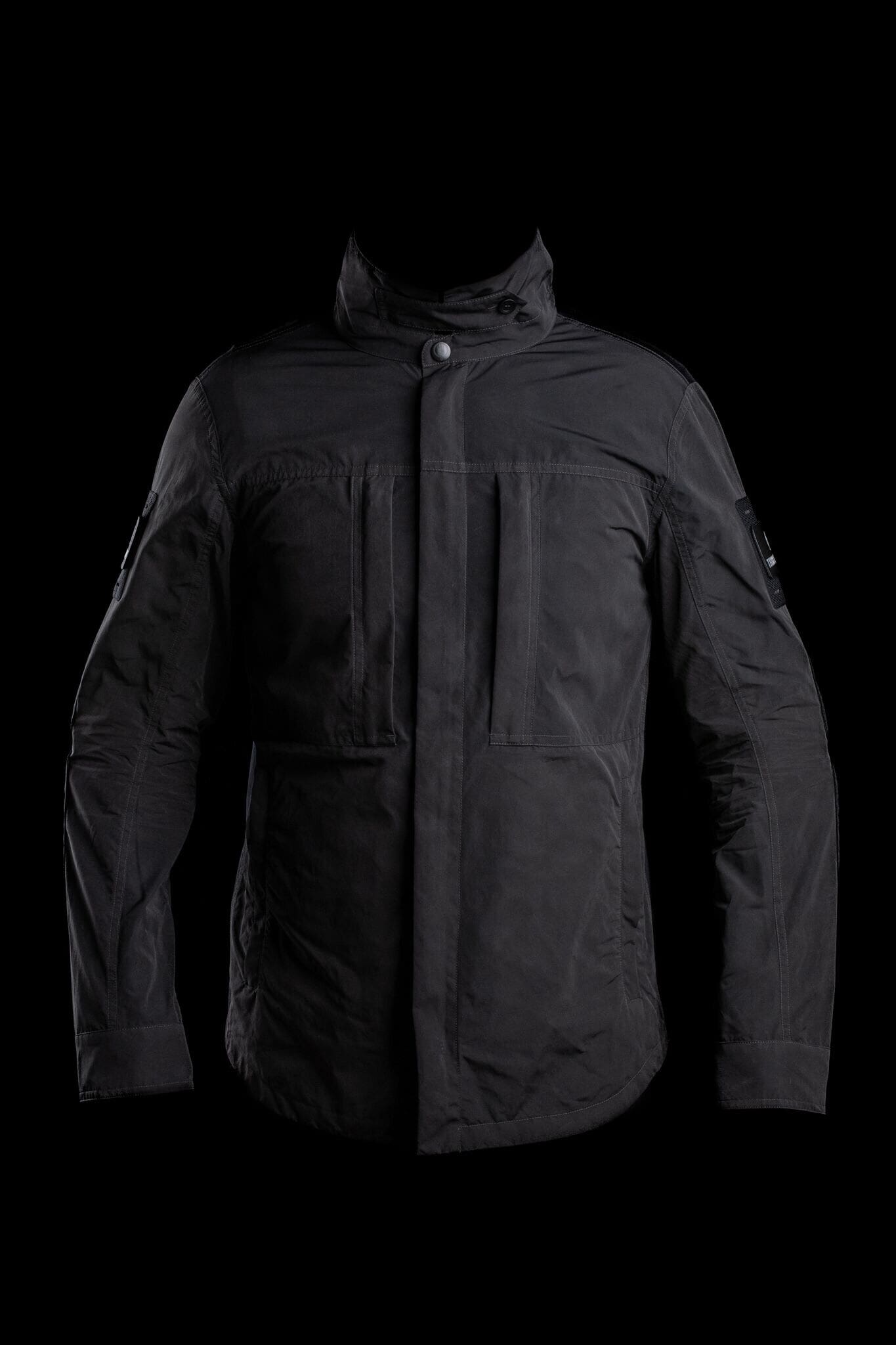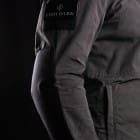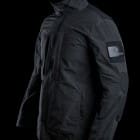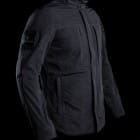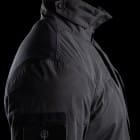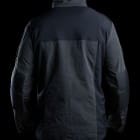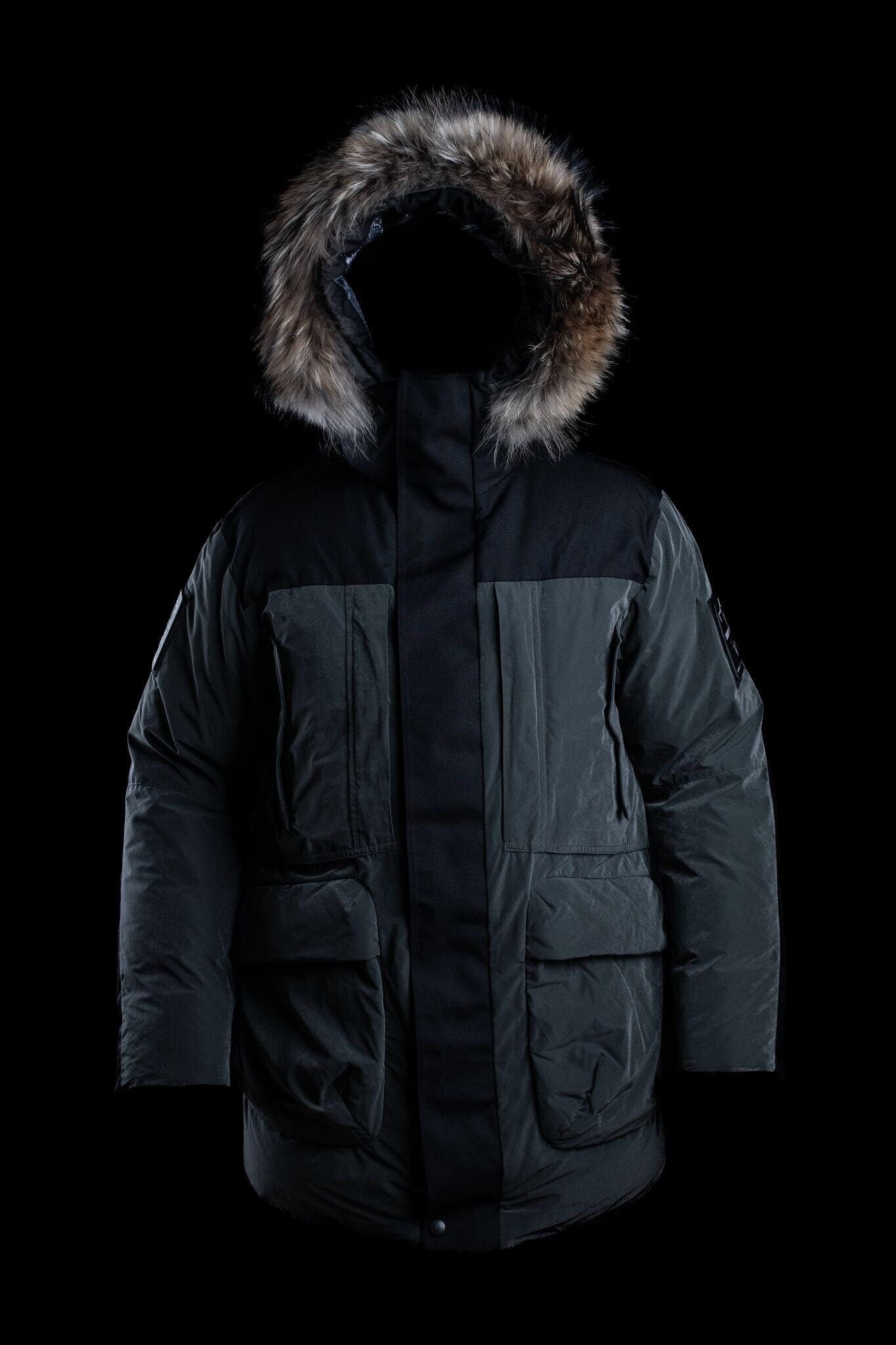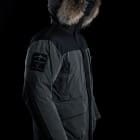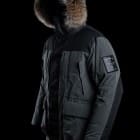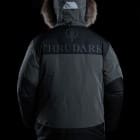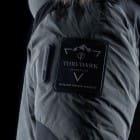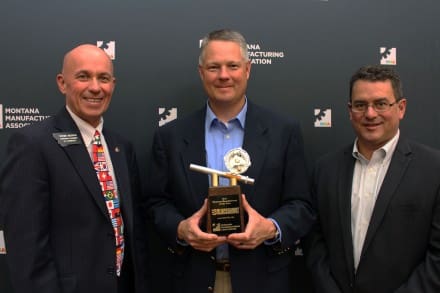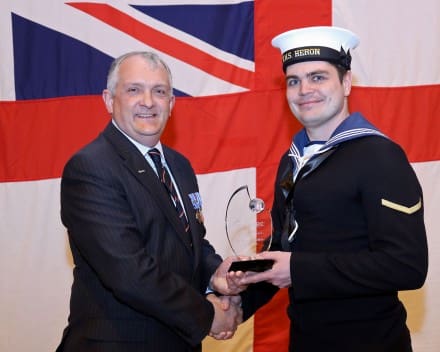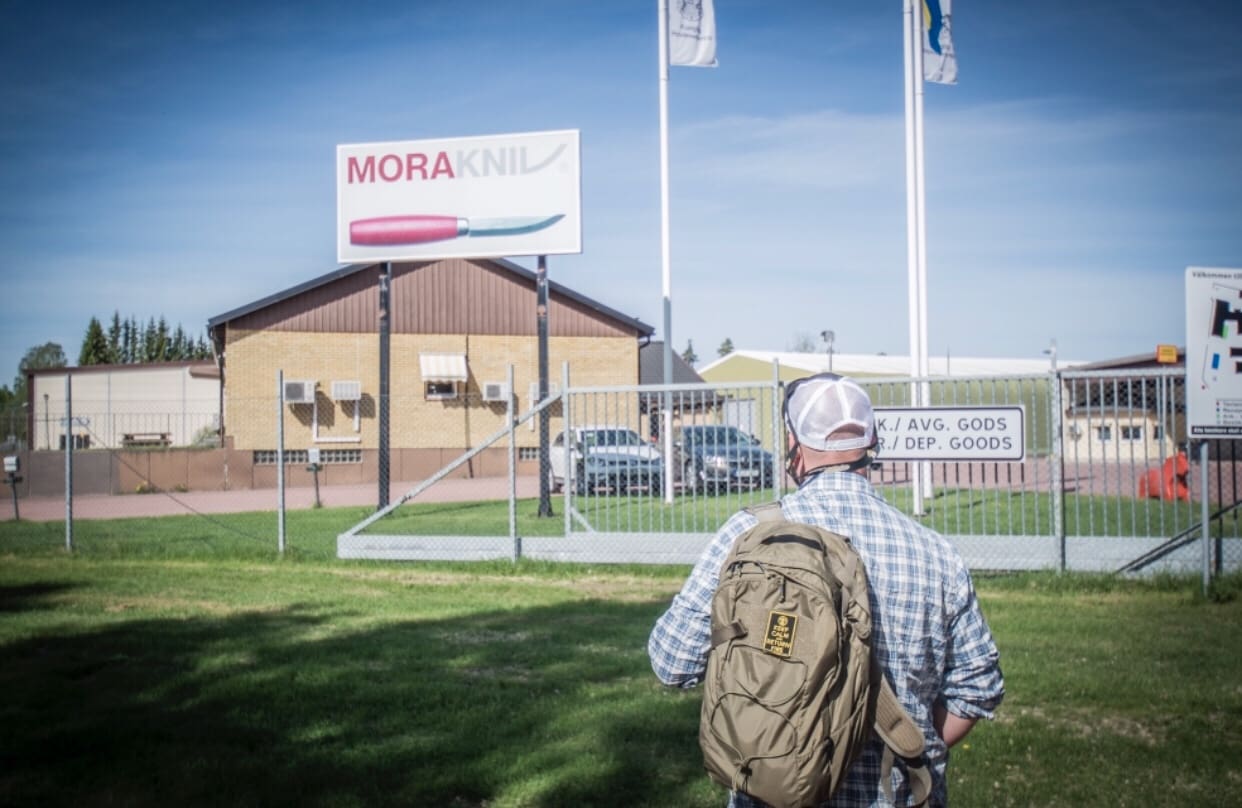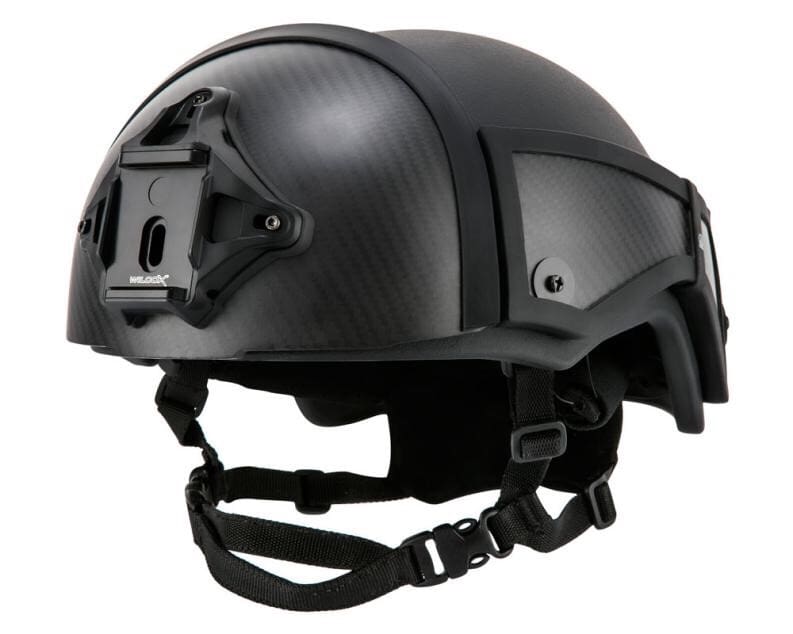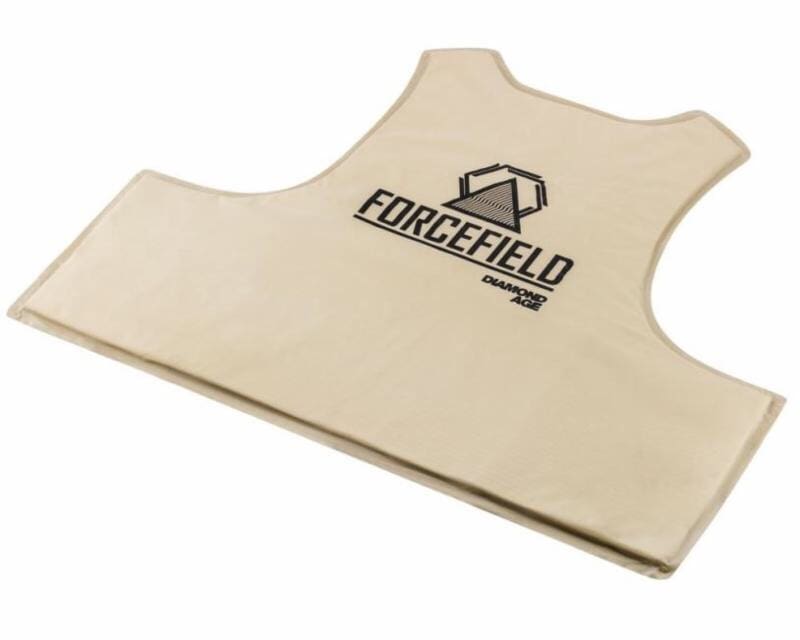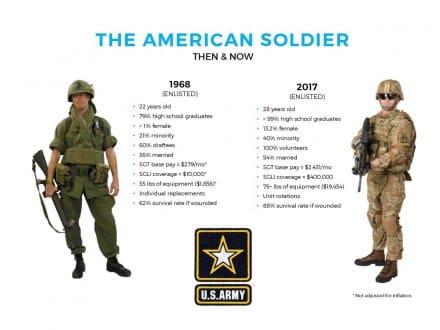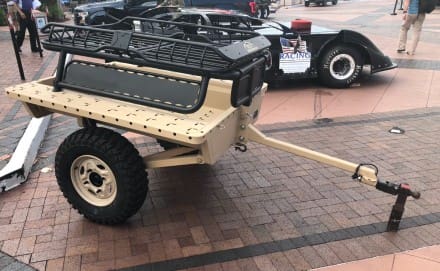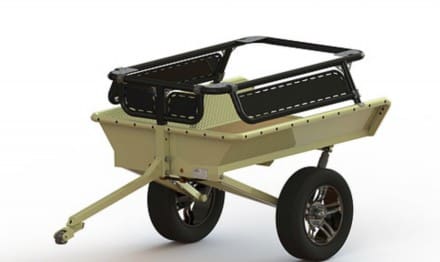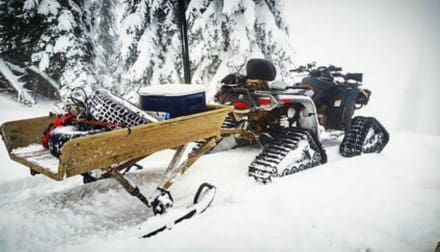Founded by two UK Special Forces Veterans, ThruDark has released the fiest of its new line of clothing. Their first three garments are the SF Zodiac Coat, SF Hybrid Jacket and SF Expedition Parka.
An anorak cut, the SF Zodiac Coat combines MAJO – TECH ’RIPPER’ micro rip stop (100% Polyester) laminated to a membrane and mesh liner for 3-Layer waterproof ripstop shoulders and hood with SERATES VENTO FX4 (87% PA 13% EA) 4-Way stretch body. YKK Aquaseal zippers help keep the weather out. Pockets include upper arm and zip micro fleece lined hand warmers. There are also Velcro panels on the upper arm and hood along with elastic and Velcro adjustable cuffs with thumb loops. The oversized hood includes 3 elasticated adjustment drawcords. However, this anorak’s most interestung feature is the laser cut breathable micro fleece chin guard.
Combining the performance of a combat shirt with the features of a jacket, the Hybrid Jacket is made from the highly wind resistant MAJO – TECH ’RIPPER’ micro rip stop (100% Polyester) ripstop with SERATES VENTO FX4 (87% PA 13% EA) 4-Way stretch shoulders and torso. The elbows are reinforced with Cordura and the zippers are YKK aqua seal. In all, the jacket boasts 4 external pockets and 2 more internal. Once again, there are Velcro panels on the upper arm pockets and hood. The low profile zip neck with button attachment allows the collar to be worn open or with the neck fully covered.
Made in Italy with the finest Italian fabrics, meticulously selected by the ThruDark cofounders, such as MAJO-TECH ‘DEER FB’ (82% Polyester 18% Nylon) shell and ‘GIPITEX’ ROOTY 70 100% PL camouflage liner. It is also insulated with 900 fill power 100% goose down. There are large capacity bellow pockets and extended chest pockets as well as 4 large internal pockets for sensitive items to be placed next to the bodies core. Additionally, the Parka features external micro fleeced hand pockets, wrist warmers and an internal balaclava provide exposed hands and face protection from severe cold. The YKK aquaseal zips are fitted with oversized zip pullers enabling convenient access when wearing gloves and the adjustable and removable Raccoon fur trim provides essential protection from ice build up. There is an internal waist draw cord and removable snow skirt. The SF Expdition Parka is fitted with two-part technology RECCO Rescue System on the upper right arm. This sophisticated radar technology provides mountain rescue teams a chance to detect wearers in distress. The upper arm and hood have Velcro panels and the elbows are reinforced with Cordura.


